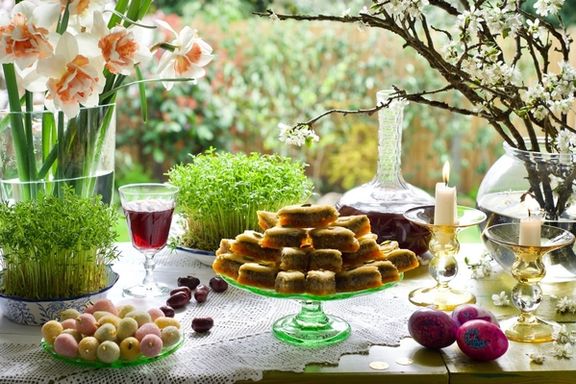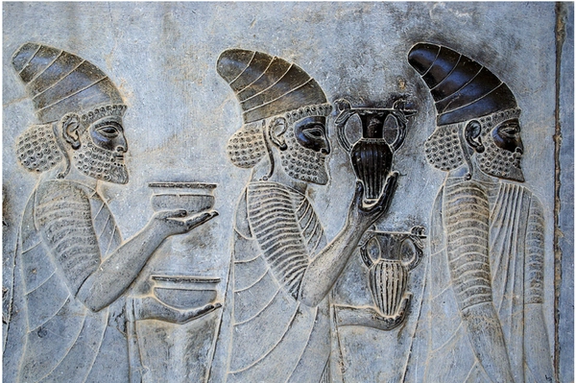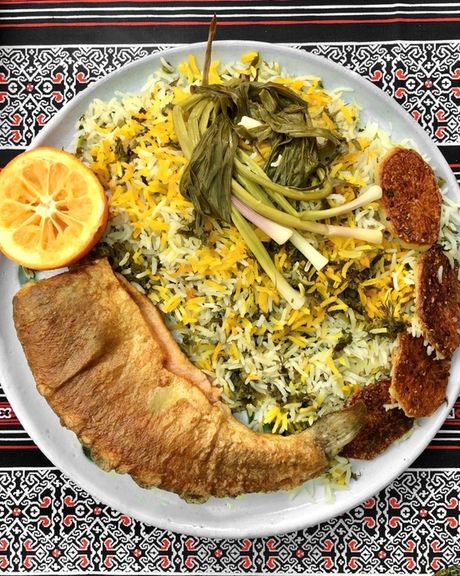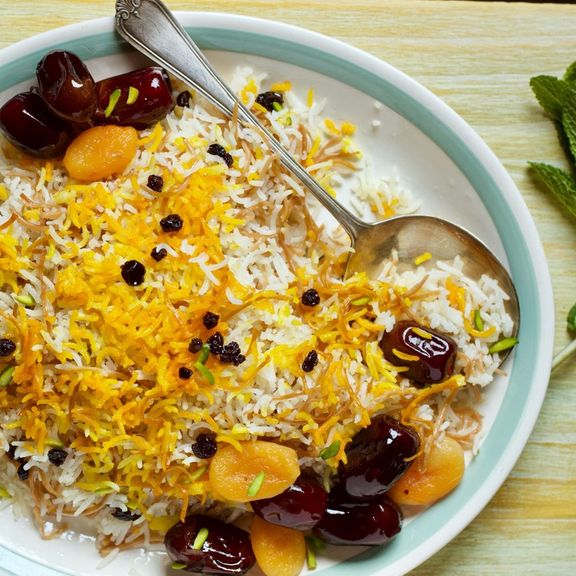Iranians Celebrate Ancient Nowruz As Spring Brings New Year

Iranians, and millions in other countries, celebrate the ancient Nowruz, or New Year on March 21, and begin the year 1402 in the Persian calendar.
Exactly at 54 minutes, 28 seconds past midnight Tehran time on March 21, the ancient Nowruz festivities began with family members assembled around a spread called ‘haftseen’ exchanging holiday greetings and gifts.
The spread, on the floor or on a table, is laden with flowers and sprouted greens, which celebrate the coming of spring, symbols of wealth (coins), fertility (painted eggs), life (goldfish), apples, a mirror, candles, sweets, nuts, a pudding made with wheat germ, and a holy book such as the Quran or a tome of the nationally revered poetry of Hafiz Shirazi.
The names of at least seven of the many items on the spread must begin with the Persian letter ‘sin’, probably the short form of sini (tray) as the custom was to display such items on seven trays.
Nowruz celebrations form an integral part of the Iranian identity. Despite Iran's Islamification fourteen centuries ago, and the Islamic Revolution of 1979, the celebration of Nowruz has endured not only in Iran but also in many of its neighboring countries such as Afghanistan, Turkmenistan, Azerbaijan, and among Kurds in Turkey and Iraq.
History and Origins
Nowruz has been celebrated by Iranians since Achaemenid times (550-330 BC). The word Nowruz, which derives from Old Persian nava sarda (new year) is only attested in Middle Persian. The feast itself has its roots in ancient agricultural festivals which centered around the cycle of nature. Some scholars believe ancient Persians were inspired by the splendor of Babylonian spring festival of Akitu developed their own Nowruz festival.
Some historians also believe that the magnificent Persepolis complex in southern Iran built by Achaemenid kings, or at least parts of the complex such as the Apadana Palace, and the Hundred Columns Hall, were specifically built for celebrating the New Year.

The bas-relief at the Apadana Palace which shows representatives of the nations under the Achaemenid Empire bearing gifts for the King of Kings may be a portrayal of the Nowruz celebration at the heart of the empire.
The Islamic Republic rulers have never embraced the pre-Islamic Nowruz, but they have also not dared to ban it.
Nowruz, Celebration of Spring Equinox
The exact moment of the beginning of the new year, which varies from year to year and was calculated by astronomers since ancient times, marks the Spring Equinox in the northern hemisphere. Accordingly, the turn of the year may fall anytime from the evening of March 20 to the evening of the next day.
Unlike the lunar calendar prevalent in other Muslim countries in which it is the year 1444 now, the new year will be 1402 in the solar Jalali calendar, Iran's unique calendar introduced in 1079 AD.
Like many things in the Iranian history, the calendar seamlessly combines Islamic and ancient Iranian elements. The first year of the calendar is Prophet Muhammad’s hijra from Mecca to Medina but each of its twelve months is dedicated to an ancient Iranian deity.
The Foods Of Nowruz
On the eve, or the day of Nowruz, Iranians make special foods with seasonal and symbolic significance. In the 20th century, rice mixed with lots of green herbs (dill, coriander, fenugreek greens, wet garlic) and served with pan-fried ‘mahi sefid’ fish (Caspian kutum) or other fishes has become highly representative of the food for Nowruz.
Other green food, to celebrate the end of winter and arrival of spring, such as a very green, thick omelet made with the same type of herbs (kuku sabzi) and served with green or plain rice are also very popular.
Apadana, one of the oldest halls of the complex dating to the first half of the 6th century BC, was where the king would hold audience with his subjects, with great pomp on special occasions such as the New Year.

Many families, particularly in central areas where fish was very hard to come by before modern times, make a dish of rice mixed with noodles and served with chicken, dried apricots, and dates instead of the green rice and fish. A stew-like soup with green herbs, legumes and noodles (ash-e reshteh) is also among holiday season foods. Noodles in these dishes symbolize longevity.
During the holiday season, which culminates in the all-important ‘sizdeh be dar’ picnic on the 13th of the first month, Farvardin, people visit family, relatives and friends. Guests are welcomed with sweets, nuts and fruits.
